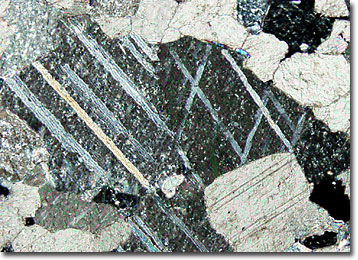Polarized Light Microscopy Digital Image Gallery
White Marble
Marble is a type of metamorphic rock primarily composed of limestone or dolomite that occurs in a wide variety of colors, often highlighted by beautiful swirling patterns. Readily polished to a fine sheen, the material has been a favorite choice for ornamental purposes for thousands of years and has been particularly preferred for sculpting purposes.

The most highly valued marble in ancient times was pure white in color. The beautiful material, which could be found in several locations in Greece, was heavily quarried and exported to many other areas, most notably Rome. Numerous examples of ancient white marble sculptures can still be enjoyed around the world in museums, but these works of art appear quite differently than they did to their contemporary viewers. This is primarily because ancient Greeks and Romans painted their statues in brilliant hues and decorated them with various types of ornamentation. Most of the colors that adorned these marble works, however, have faded over time and, in some cases, museums have actually stripped away final traces of dyes and paints during cleaning processes. The result of such actions is the prevalence of many pristine white sculptures that do not accurately reflect their past.
Due to its mineral content, marble may suffer corrosion from acid fumes and water, but, nevertheless, the rock is remarkably durable. A testament to this fact is the Greek Parthenon, one of the greatest monuments ever constructed. Built as a temple of Athena in the mid-fifth century BC, this impressive edifice was designed to house a huge statue of the goddess. More than 100 feet wide and 225 feet long, the Parthenon and all of the sculptures and artistic wonders it contained were fabricated from Pentelic marble, a pure white variety from Mt. Pentelicus in Attica. Although the temple has suffered some damage over the course of history, its basic structure remains relatively unscathed.
